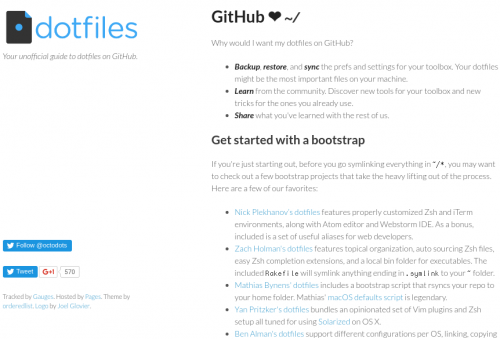Warning: you will lose a lot of sleep if you follow the link below. :)
No matter how well you know Vim, bash, git, and a whole slew of other command line tools, I promise you, you’ll find something new, something you had no idea existed, something that will help you save hours and hours of your life by shaving off a few seconds here and there on the tasks you perform on a daily basis, in the repositories link to from this site.
I think I’ve spent most of my Sunday there and my dotfiles are so different now that I’m not sure I should commit and push them all in one go. I think I might need to get used to the changes first.
Some of the things that I’ve found for myself:
- PHP Integration environment for Vim (spf13/PIV).
- myrepos – provides a
mrcommand, which is a tool to manage all your version control repositories. - bash-it – a community Bash framework.
- Awesome dotfiles – a curated list of dotfiles resources.
… and a whole lot of snippets, tips, and tricks.
P.S.: Make sure you don’t spend too much time on these things though :)
